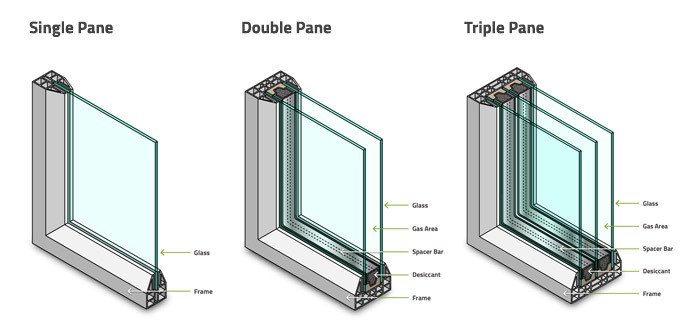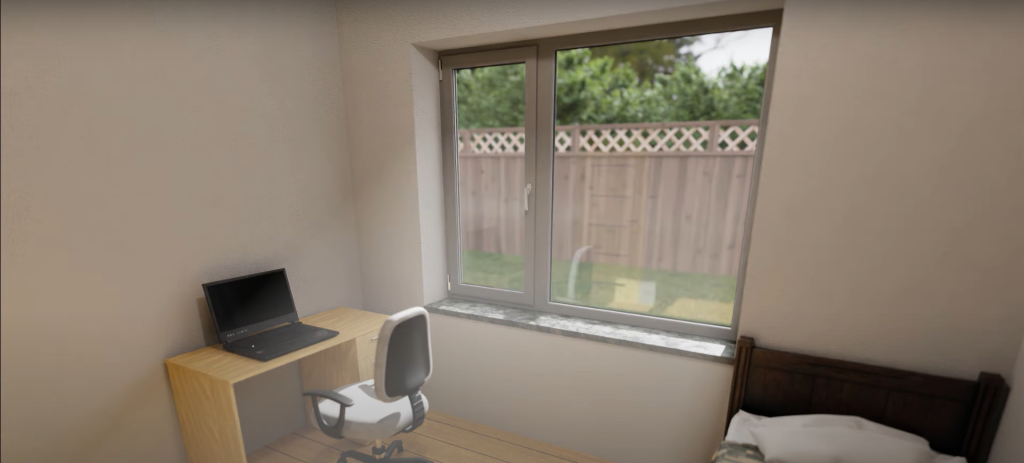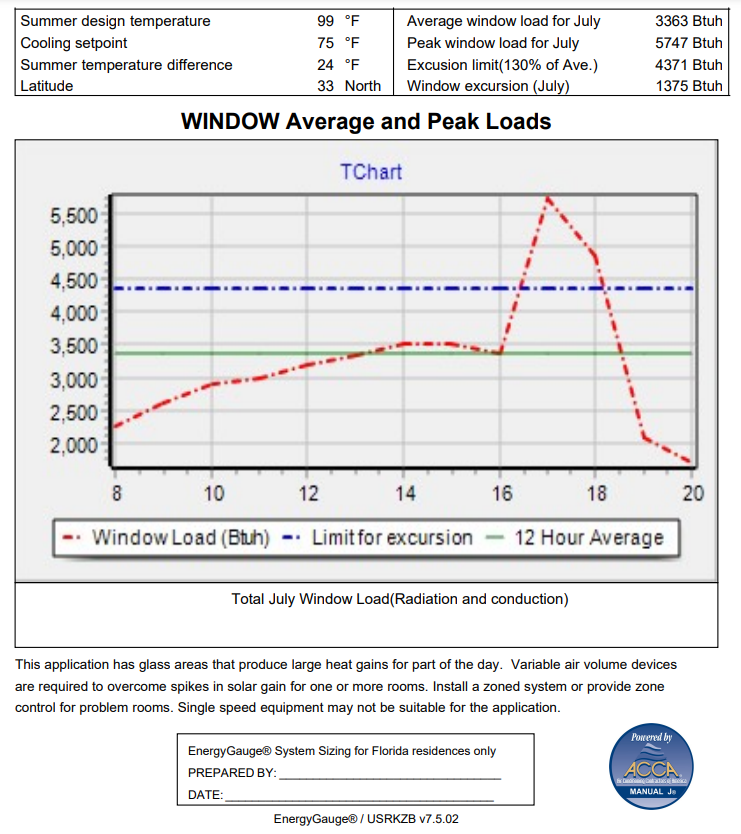Get Tech Tips
Subscribe to free tech tips.
Manual J Field Data: Windows
A manual J load calculation will require you to input the U-value for the windows or “fenestrations” on the house. Fenestration is a fancy construction word for window. Figuring out the U-value and SHGC of a window on an existing home is very difficult. But first, let’s dive into what the terms U-value and SHGC mean. As mentioned in the last article, a lot of this information comes from Allison Bailes’ book, A House Needs to Breathe: Or Does It?
Terminology
The U-value is the inverse of the R-value. Bailes says, “Officially, this property is called heat flow conductance, but most people call it U-factor or U-value. It’s the reciprocal of R-value, or heat flow resistance” (A House Needs to Breathe, p. 159).
So, a smaller U-value number is better, as opposed to an R-value, where a bigger number is better. Here is a chart from Bailes’ book showing this in greater detail. The more layers of glass with special types of gas between them, the less heat will conduct through them.

Source: “A House Needs to Breathe: Or Does It?”

SHGC, or Solar Heat Gain Coefficient, is a number that “tells you how much of the solar radiation hitting a window gets transmitted all the way through to heat up the conditioned space inside” (A House Needs to Breathe, p.160).
There is a good chance you won’t have access to either of these numbers if you’re in a retrofit situation. Again, what we want to do is the best job we can. Unless you have a room with a significant amount of west-facing glass, knowing the exact ratings for windows probably won’t matter much.
Overhangs

Besides the type of window, the other major factor we need to take into account during a Manual J field survey is overhangs. Essentially, you get to take credit for the fact that a roof overhang blocks direct sunlight from coming in through the window. Let’s take a look at what that does to the load on a specific window.
The table below shows a “single pane” window I made up with a large overhang. Then, I removed the overhang to see the difference it made to the load calculation.


Adequate Exposure Diversity
Modeling different windows with and without overhangs led me to dig into the word “excursion” at the end of the windows section on the Manual J data. Interestingly enough, when I removed the overhangs above the windows on the house, the “excursion” addition to the load dropped. What’s going on here?
Certified Manual J software checks a house for what it calls Adequate Exposure Diversity or AED. It says:
“Room fenestration loads peak at different times of day, depending on exposure direction. Therefore, if the suite of rooms that are served by the central cooling equipment has multiple exposures, the total fenestration load at any hour of the day is less than the sum of the peak fenestration loads for the various rooms.”
Manual J AE, p. 191

Not all of the windows in a house will be at peak load at the same time because the sun will be shining on different ones throughout the day as it moves across the sky. So, the load calculation, which determines peak load in the middle of the afternoon, will take that into account. The software will check to see if you have a section of the house (like a second story, room with west-facing windows, etc.) that peaks heavily while the rest of the house doesn’t.
The Manual J software will flag this because you’re going to have trouble keeping people comfortable in those rooms during certain times. The rest of the house will be comfortable, and the system may shut off. But the rooms with a large amount of glass will NOT be comfortable. Multiple systems or zoning may be required. If you don’t address the issue, the software will add load to keep the high-load areas more comfortable at the cost of oversizing and overcooling the rest of the house.
Manual J also recommends addressing the load imbalance by adding window shading or installing better windows on the problematic side of the house. There are other ways to solve comfort issues besides the tools an HVAC contractor has. Know what those tools are so you can recommend them to your homeowner.
What You Need to Know
In summary, when you’re doing a Manual J on an existing home, you probably won’t have access to the actual U-value and SHGC for the windows. Look to see if they are single, double, or triple-paned. Use the generic window chart in this tech tip, or look in the back of your copy of Manual J. Make note of overhangs, insect screens, and curtains so that you can take credit for them in your Manual J software. Two-story houses and houses with a lot of glass on one side may require zoning, a dedicated system, or window upgrades because the load in that area will be so different than the rest of the house during peak conditions.











Comments
To leave a comment, you need to log in.
Log In